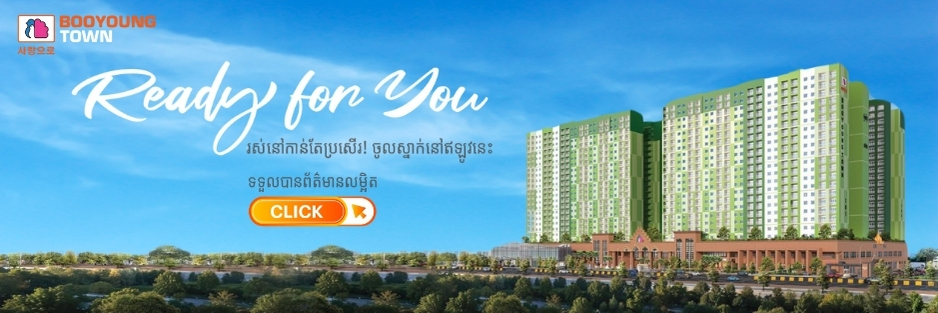
An under-construction bridge across the Mekong River in Kratie province was almost 95 per cent complete in early May. Transport ministry
Countries in Asia and the Pacific are economically intertwined through trade and investment, yet the roads, railways, ports and airports that move people and goods lag far behind what the region needs.
About 1.8 billion people — four in every ten residents — lack reliable transport links. By comparison, 570 million have no electricity and 680 million people lack access to safe water, but transport remains the bigger brake on growth because it underpins every other service.
The scale of the shortfall is stark. Low‑income and lower‑middle‑income economies in the region have fewer than four kilometres of transport infrastructure for every thousand residents, while higher‑income economies manage just under twelve.
Wealthier countries, such as members of the Organisation for Economic Co‑operation and Development (OECD), enjoy an average of 17 kilometres of transport infrastructure for every thousand residents.
Measured by land area, Asia musters 433 kilometres of infrastructure per thousand square kilometres — well below the OECD’s 690. Limited networks raise shipping costs, lengthen travel times and squeeze competitiveness.
A single disruption — such as the delay of one million containers — can lift shipping rates by more than $2,000 per container. With so few alternatives, costs climb and supply chains buckle.
Landlocked nations and small island states face a double burden: distance and expense. A landlocked economy must haul a typical shipment 1,500 kilometres — twice the regional average — and pays almost twice as much for a standard forty‑foot container.
On average, low‑income countries wait two hundred extra hours for goods to arrive and pay hundreds of dollars more per journey than their wealthier peers. Inflation follows: the International Monetary Fund finds that when freight prices double, consumer prices rise nearly a full percentage point.
Quality is as troubling as quantity. National highways and expressways make up only 5% of roads in low‑income countries, versus 11% in high‑income ones. Average intercity speeds crawl at 68 kilometres per hour in poorer nations, compared with 99 in richer economies.
Ports fare little better: three‑quarters of Asian ports score below the global average for connectivity. Aviation, once rising, slipped after the pandemic to fewer than three flights per thousand people — far behind Europe and North America.
Poor connectivity also punishes the planet. Transport emits about 12% of Asia’s carbon, but that share leaps to 19% in landlocked nations and nearly half in small island states.
Roads account for almost 90% of those emissions. Limited, fragile infrastructure absorbs the brunt of environmental shocks: tunnels and bridges represent 1% of road length yet are expected to suffer nearly a quarter of the damage.
To address these issues, the following actions should be taken:
Build more — and better — links. Research shows that the gap is not just miles of pavement but efficiency. Upgrading national highways, modernising bridges and adding dedicated freight corridors can lift network performance from barely half of ideal travel speeds toward the levels seen in advanced economies. Stronger materials and resilient designs cut repair bills and keep trade flowing after storms or floods.
Invest in true multimodal networks. Relying almost exclusively on roads makes the system brittle and dirty. Expanding heavy rail, high‑speed passenger lines and urban rapid transit spreads demand, lowers emissions and offers fallback options when one mode falters. Diversifying transport also slashes costs: each percentage point shift from road to rail trims fuel use and freight charges.
Prioritise the most isolated. Landlocked and small island economies endure the steepest costs. Extending regional corridors to the sea, upgrading dry ports, and improving island airports can halve shipping distances and charges. Because distance is destiny for these nations, every kilometre shaved from a route yields outsized economic gains.
Mobilise sustained finance. Meeting Asia’s transport needs between 2020 and 2035 will cost an estimated $43 trillion dollars — about 2% of regional output each year. Roads require the largest slice, but nearly 40% must go to rail, urban transit, ports and airports if the system is to be balanced and resilient. Annual spending of $2.7 trillion is daunting, yet the payoff is faster trade, stronger growth and lower emissions.
Leverage multilateral and regional cooperation. Official development assistance for Asian transport rose from 43% of the global total in the early 2010s to 55% in recent years, with rail finance jumping ten‑fold.
Align national policies with clear targets. A review of 650 transport strategies across 36 countries shows that six in ten now set concrete goals for road connectivity, though fewer do so for rail, ports or aviation.
Governments must broaden those targets, embed multimodal planning and measure progress. Where they do, the impact is immediate: since 2016 most Asia Pacific nations have climbed the global logistics rankings, proof that policy backed by investment works.
Asia and the Pacific sits at a crossroads. It carries most of the world’s people and trade yet moves them on thin, fragile and lopsided networks. The cost is counted in lost time, higher prices and rising carbon.
Closing the gap demands trillions of dollars, smarter design and deeper cooperation — but the dividends are enormous: faster growth, greater resilience and cleaner air.
James Leather is director of the Asian Development Bank (ADB) Transport Sector Office; Alvin Mejia and Sudhir Gota are experts on sustainable transport. The views and opinions expressed are those of the authors and do not necessarily reflect the views of the ADB or its management or members.











